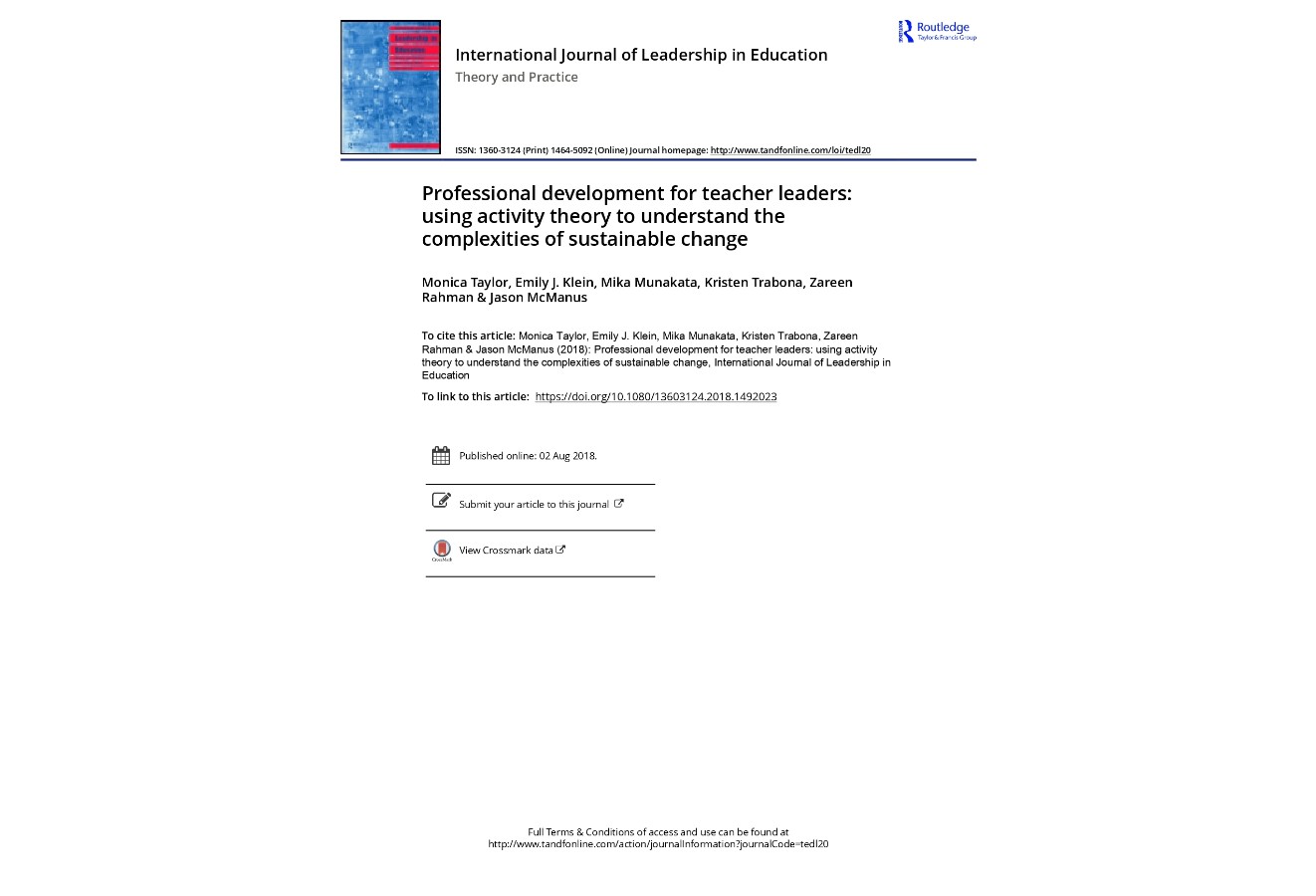
York-Barr and Duke (2004) suggested that teacher leadership is the process by which classroom teachers, individually or collectively, influence their colleagues, principals and other members of the school community to improve teaching and learning practices. In a recent paper from the Aspen Institute, Curtis (2013) defined teacher leadership as ‘specific roles and responsibilities that recognize the talents of the most effective teachers and deploy them in the service of student learning, adult learning and collaboration, and school and system improvement’ (p. 4). Additionally, Curtis (2013) called teacher leaders ‘innovators, researchers, champions of student learning, leaders of colleagues, and policy advocates’ (p.4). Classroom teachers come to view leadership as part of their professional role, sharing and enhancing professional learning within their school setting. They generate new knowledge for themselves from action (Reason & Bradbury, 2008) which leads to new initiatives (Taylor, Goeke, Klein, Onore, & Geist, 2011) that affect change in their classrooms, schools and communities (Onore, Goeke, Taylor, & Klein, 2009). Impacting the school beyond their own classrooms involves: improving practice and deepening content knowledge, mentoring, developing curriculum, nurturing professional communities, participating in school decision-making, fostering change and challenging the status quo (Danielson, 2006; Fairman & Mackenzie, 2012; Jacobs, Beck, & Crowell, 2014; Silva, Gimbert, & Nolan, 2000;Stone & Cuper, 2006). Because of the complexity of teacher leadership, its definition is often dynamic, fluid and multiple. Muijs and Harris (2006) echoed this perspective when they wrote: ‘Leadership is a fluid and emergent rather than a fixed phenomenon’ (p. 962). Teacher leadership can emerge at the individual level, in collaboration with others, and within larger organizations (Taylor, Goeke, Klein, Onore, & Geist, 2011). Being a teacher leader involves formal and informal ways to improve instruction, learning, and school and classroom culture and these vary across contexts, expectations and organizational structures (Fairman & Mackenzie, 2012; Mentzer, Czerniak, & Struble, 2014; Muijs & Harris, 2006; York-Barr & Duke, 2004). Formal or informal impact could manifest as a result of an individual teacher leader or the distributed leadership within an organization (Gigante & Firestone, 2008; Ritchie, 2012; Ritchie, Tobin, Roth, & Carambo, 2007). From the latter perspective with a focus on the relational (Donaldson, 2006; Muijs & Harris, 2006), systemic change through teacher leadership can be explored across a school or district with attention given to trusting and non-hierarchical relationships and interactions among administrators, teachers and stu- dents. Building these types of relationships where power is shared rather than allocated involves creating mechanisms for democratic decision-making and negotiation of roles and responsibilities.
